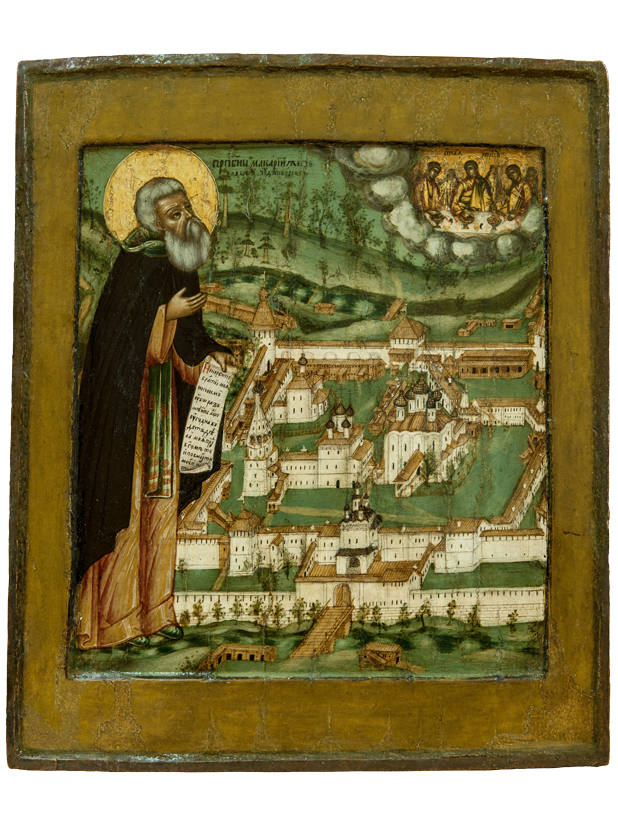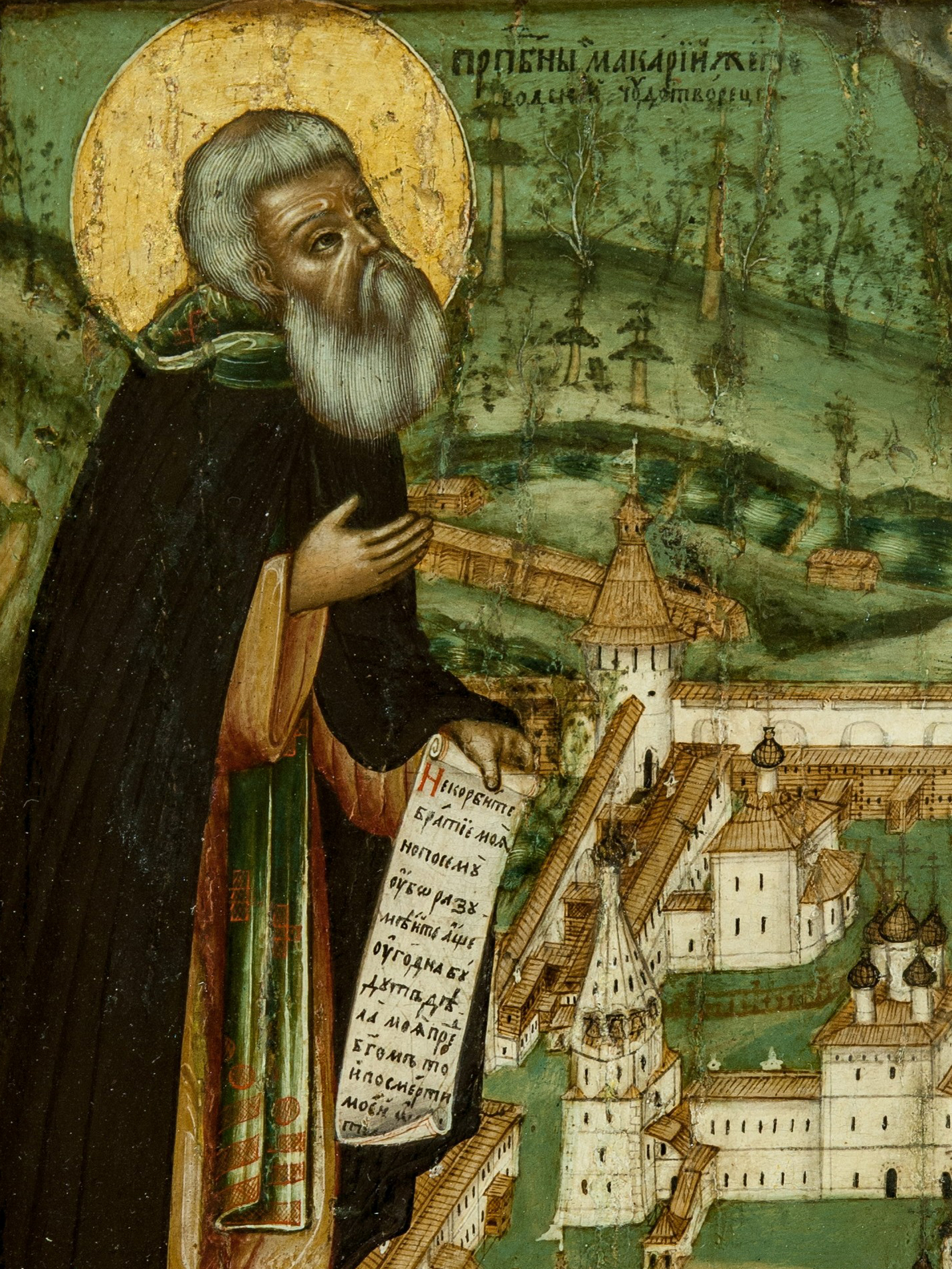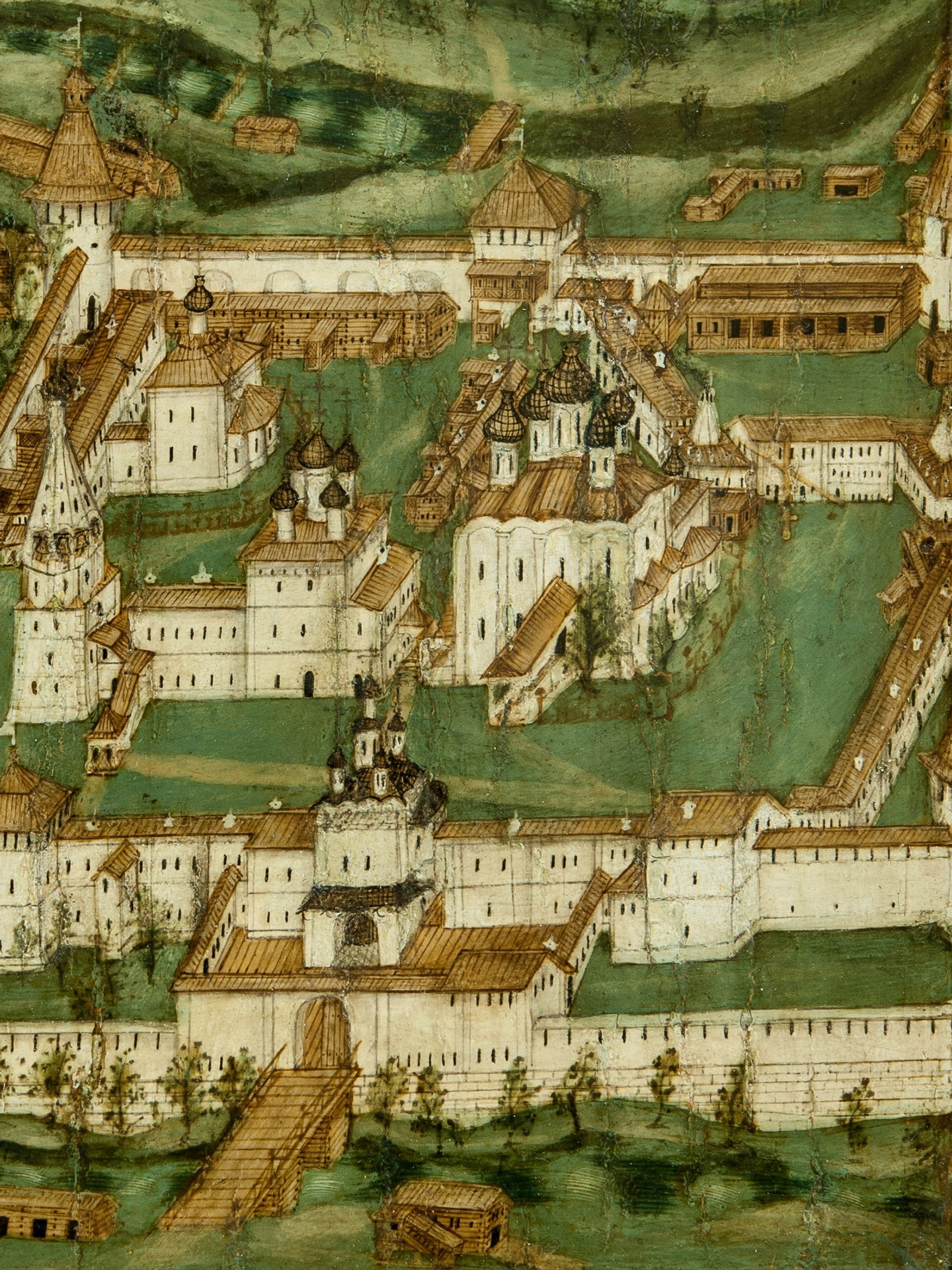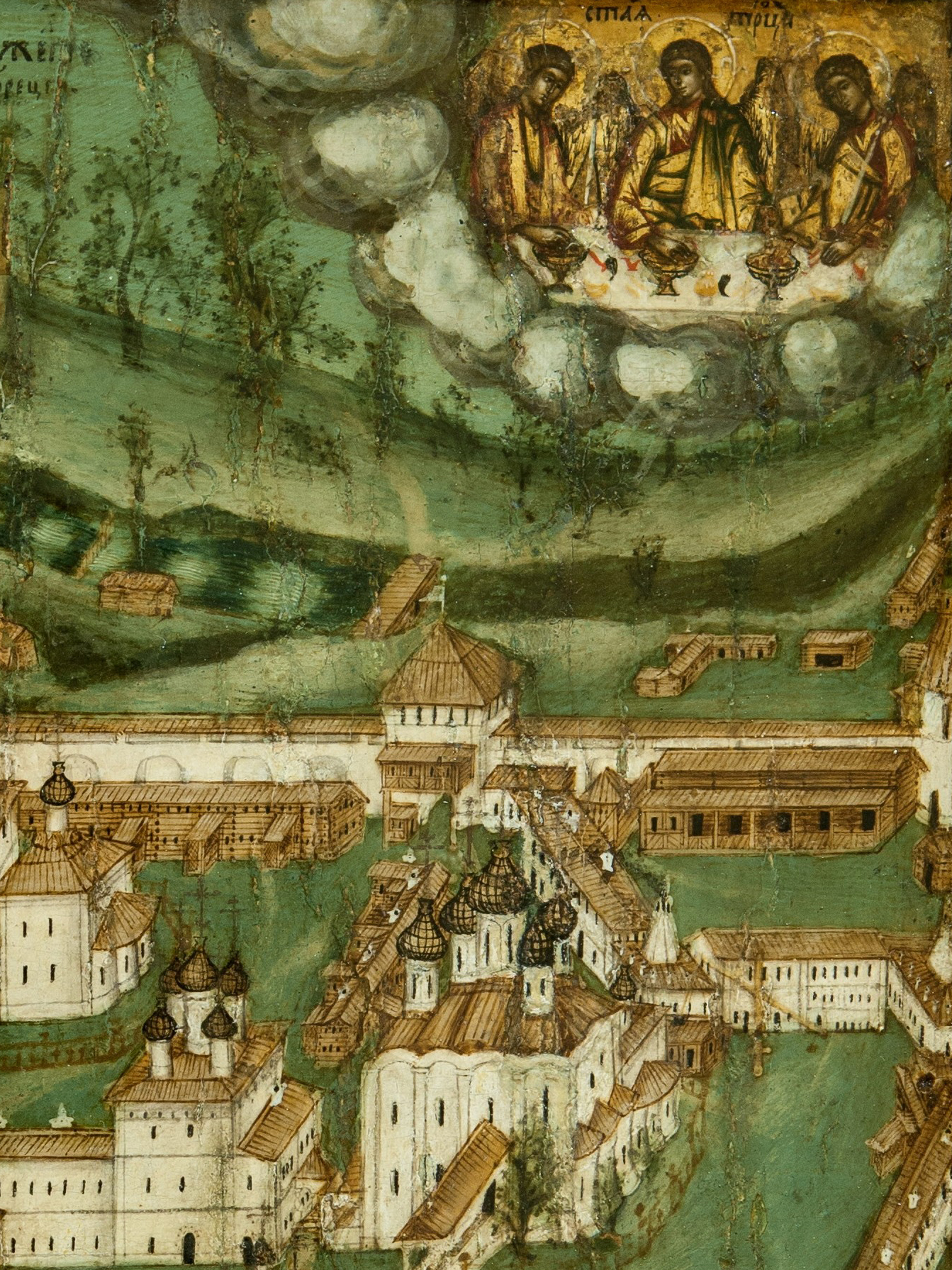REV. MACARIUS OF ZHELTOVODSKY AND UNZHA WITH A VIEW OF THE TRINITY MONASTERY




Reverend Makarius of Zheltovodsky and Unzhensky (around 1350s – after 1446) was born in Nizhny Novgorod. He left home in teenage years and took monastic vows at the Nizhny Novgorod Pechersky Monastery. Through his mentor, Abbot of the Monastery Dionysius of Suzdal (died 1385), who is known as one of the most authoritative spiritual figures of his time, Macarius was familiar with the spiritual precepts of the Rev. Sergius Of Radonezh. He dedicated two of the three monasteries he founded to the Holy Trinity.
The icon depicts the Zheltovodsky (Yellow Water) Trinity Monastery, founded around 1434 near Nizhny Novgorod, at the feet of the Reverend Makarius. This Volga monastery in 1439 was ravaged by the Horde. At the beginning of reign of Mikhail Fedorovich it renewed by the monk Abraham of Murom. By the middle of the XVII Century Makarievsky Zheltovodsky Monastery was among the largest monasteries in Russia, and in the second half of the Century it had reached its peak. Within this period a whole lot of outstanding figures of the Russian Orthodox Church came from this monastery: Patriarch Nikon, the Confessor of Tsar Alexei Mikhailovich Stefan Vonifatiev, as well as the ideologist of the schism Avvakum Petrov and many others.
In the XVI Century a spontaneous fair had developed at the foot of the walls of the Monastery in the middle of the Volga trading route. It was called Makarievsky Fair. In the XVII Century it became the most famous in the country. In 1641 Tsar Mikhail Fedorovich granted the Monastery the right to collect customs duties from merchants. From those trade fees the Monastery was able to raise money to build stone buildings.
At the end of the XVII Century the Monastery turned into a huge fortification facility. This is exactly how it is depicted on the icon. The icon painter with a rare for his time skill pictured a vast architectural complex in every little detail. He thoroughly painted not only the buildings, but even every little detail of stone and logs of wooden buildings, crosses on the spires, weathervanes on the towers, chimneys on all residential buildings, etc. This rare in its beauty architectural ensemble is presented against the background of an idyllic landscape with gentle, soft outlines of hills, thin trees and a narrow river with the bridge across it and small huts.
Reverend Makarius is painted in a prayer to Holy Trinity. Overlooking the Monastery, he holds a roll in his hands with an appeal to the brethren, calling to hope that even after his death he will stand for the monks before the God.
The icon was painted by an artist who brilliantly paints landscapes. This skill was included in the palette of artists of the Armory Chamber and their followers in the second half of the XVII Century.



